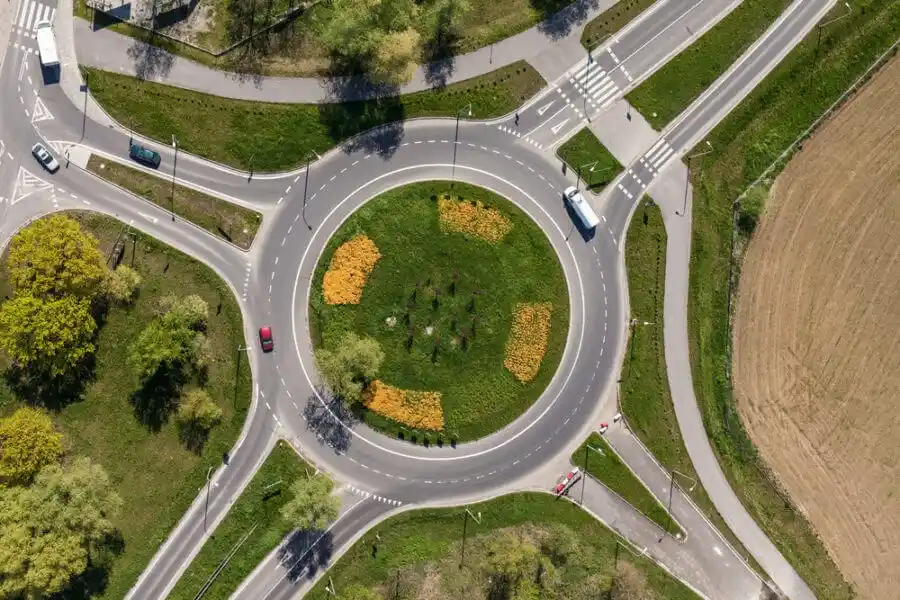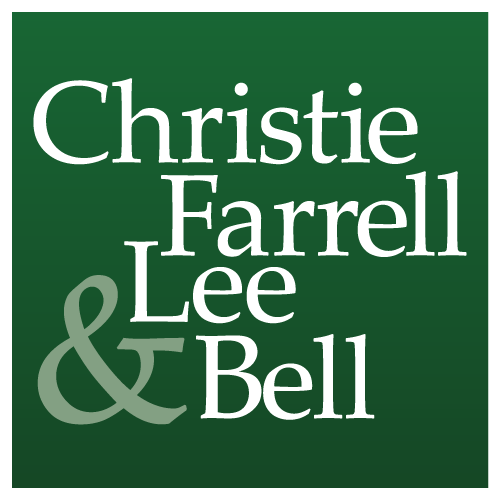Who Has the Right of Way in a Roundabout?

According to data from the Indiana Department of Transportation (INDOT), roundabouts mean 90% less fatalities and a 76% drop in injury crashes versus a traditional four-way stop. In fact, as of 2016, 256 roundabouts had already been installed throughout the state, However, in order for these traffic circles to work properly, it’s important that drivers understand how they work. Let’s take a look at Indiana roundabout laws and etiquette.
Roundabouts are a different kind of four-way intersection, built in a circular design. Roundabouts are all one-way roads, flowing counterclockwise. When approaching a roundabout, drivers should reduce their speed and remain in their lanes. Drivers need to yield to any other vehicles currently in the roundabout as they have the initial right-of-way. This also includes pedestrians and cyclists.
Drivers enter at any of the four openings, and traffic is intended to flow continuously at all times. While there are no traffic lights or signals, there are strict rules regarding right-of-way and lanes. In general, there are four basic rules for using these traffic circles.
- Slow down
- Choose your desired lane prior to entering the roundabout
- Do not change lanes inside the roundabout
- Be aware of the speed and movement of other vehicles
While roundabouts are designed to make traffic safer and flow more smoothly, they can still be dangerous when motorists ignore rules and regulations. Roundabout accidents can be caused in a variety of ways, such as when a driver fails to yield to oncoming traffic, changes lanes within the roundabout, drives the wrong way through the roundabout, or another driver cuts you off or suddenly stops. Additionally, if there are any structural issues with the road, these could cause cars to break down and be rear-ended by oncoming traffic behind them.
Speak with a personal injury lawyer today. Call: 317-488-5500
Roundabout Signage Laws
Indiana car crashes in a roundabout can also occur if roundabouts are not installed or maintained correctly. Because drivers are not necessarily familiar with these intersections, there need to be signs indicating these are one-way roads.
The US Department of Transportation (USDOT) shares lengthy and specific guidelines about the signage of a roundabout. One important element is that signs must be placed for maximum driver visibility while also not obstructing the view of oncoming traffic in the roundabout. The USDOT emphasizes this is especially important for the safety of motorcyclists and cyclists in a roundabout.
As for lane control signs in a roundabout, the USDOT says this must be determined in relation to traffic volume balance. For instance, if the city already knows lots of people turn right at a certain intersection that is replaced with a roundabout, they should account for this in the design, as well as the signage that is posted.
As a general rule, when the number of exit lanes and entrance lanes is the same, arrows on the road or lane control signs are less likely to be used. When there are more lanes going one direction than another, signs or arrows on the road may be in the best interest of drivers.

There is a need for adequate signage, but too many signs can also be confusing, so the designer has to balance both concerns. Roundabouts are a great way to cut down on traffic, reducing the need for stopping that would be at traditional four-way intersections. Even in a city like Carmel, with a population of less than 100,000, there are already 120 roundabouts and only 14 traffic lights. It’s important that these are constructed properly with adequately placed signage and public education to keep drivers aware and safe.
If you have been in an accident and need a car crash attorney in Indiana, call Christie Farrell Lee & Bell. Our experienced Indiana accident attorneys will investigate the circumstances of your accident and help determine if negligence played a role in any of these ways.
Dial 317-488-5500 or get in touch with us online today to discover your legal options.
Call 317-488-5500 or complete a Free Case Evaluation form



